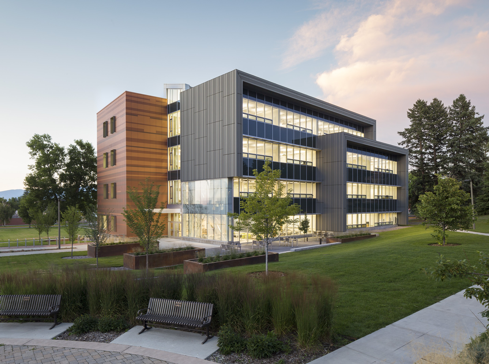GSHPs are Adaptable to a Variety of Montana Building Types and Applications
A ground source heat pump (GSHP) is a central heating and/or cooling system that transfers heat to or from the ground. As ground temperatures in Montana tend to be stable at 55F, there is almost always a temperature difference between the ground and the air. GSHPs exploit this natural differential for heating and cooling purposes to provide energy savings in the range of 20–45% for typical efficiency GSHPs and 45–60% for high efficiency GSHPs.
GSHPs are available in both open-loop (in which groundwater is pumped at ground temperature and passed through a heat pump) and closed-loop systems (which consist of a network of heat pumps that are linked to a buried, closed heat exchanger). Both system types can be tailored to fit residential, commercial and industrial applications.
Closed-loop systems are particularly cost-effective in certain scenarios including new construction; climates with high daily temperature swings; climates with cold winters and hot summers; areas with higher electricity costs; and areas where gas costs more than electricity.2 In general, open-loop systems are more efficient due to lower resistance to heat transfer between piping and water,3 but they rely on a large, accessible aquifer or other water source and an appropriate location to discharge the water they bring in.
GSHP AT-A-GLANCE:
- BUILDING SET-UP: Not ideal for buildings with large heating and cooling loads
- BUILDING TYPE: Offices, retail, schools
- BUILDING SIZE: Small- to mid-sized buildings
- CODE READINESS: Near term
CASE STUDY: Jabs Hall, Montana State University

Built using a $25 million gift from MSU alumnus Jake Jabs, Jabs Hall at Montana State University was designed with efficiency in mind. Using a GSHP, Jabs Hall conditions its space using 52 geothermal bores that provide thermal storage at a ground temperature of nearly 54F. These pumps move water through closed loops that reach 500 feet in depth and then through a plate and frame heat exchanger connected to the heat pump system.
CASE STUDY: Orange Crush CTA Office

The 10,000 sq. ft. Orange Crush CTA Office building in Great Falls, Montana, underwent a retrofit project to install a 675-foot water-source withdrawal well to capture energy from the earth’s water. Using high-efficiency heat pumps, their open-loop GSHP system extracts energy from the near-constant 53F underground water and distributes it to the building’s custom-designed conductive radiant floor system. By running the 53F water through the radiant floor panels installed throughout the building, the system provides space cooling without requiring compressors.
